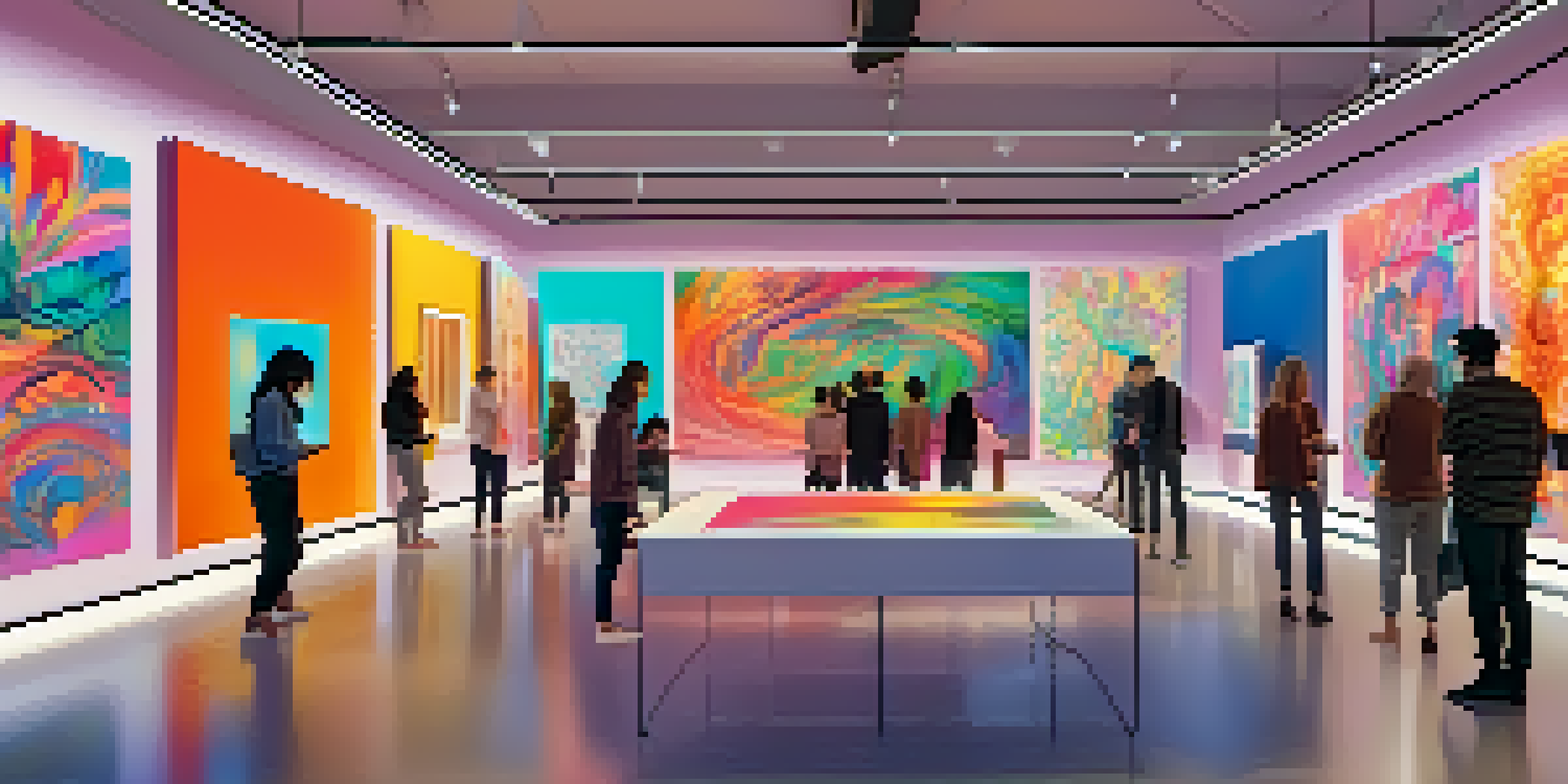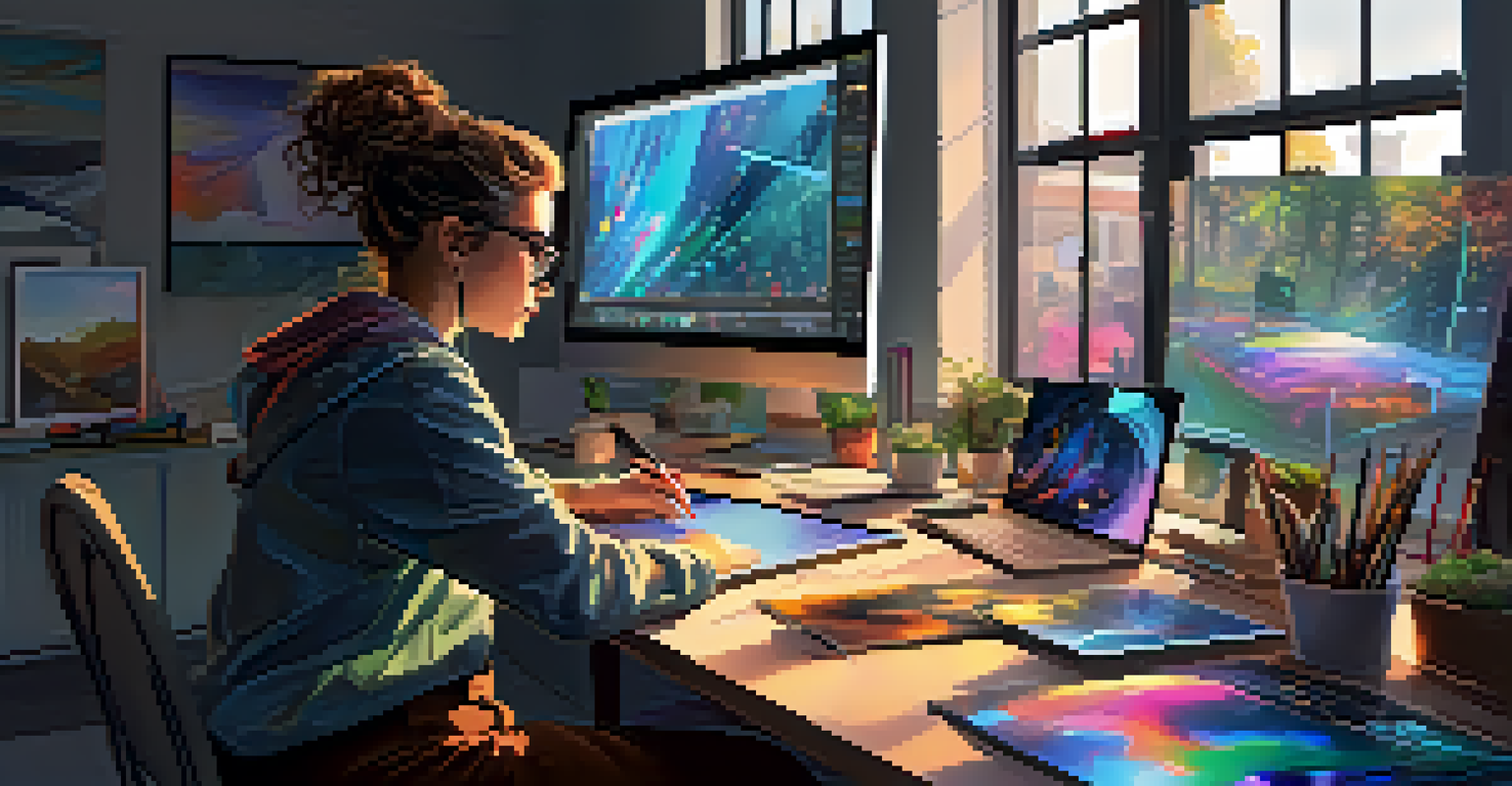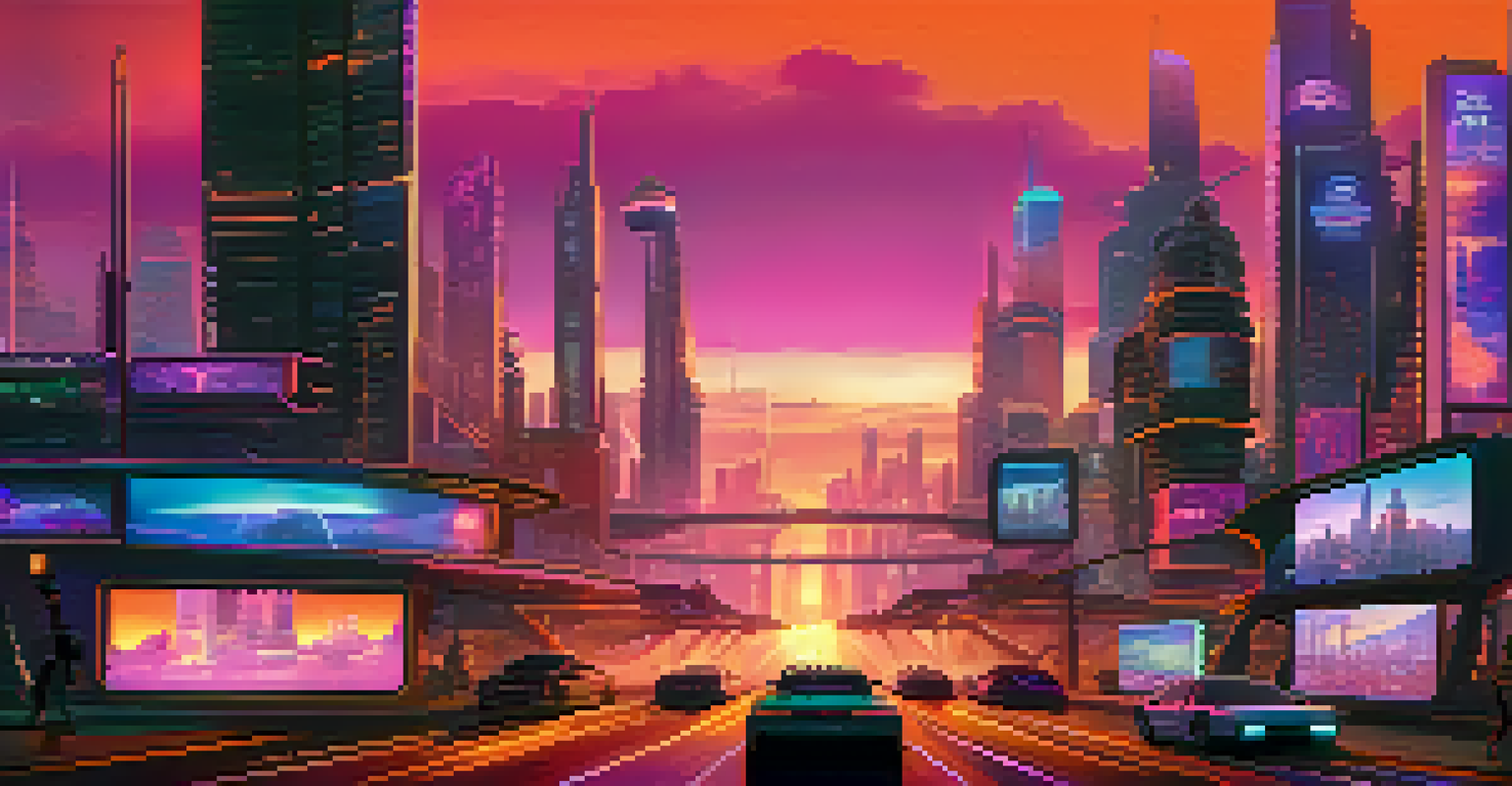NFTs for Independent Creators: Creating a New Revenue Stream

Understanding NFTs: A Beginner's Guide for Creators
NFTs, or Non-Fungible Tokens, are unique digital assets verified using blockchain technology. Unlike traditional currencies or cryptocurrencies that can be exchanged for one another, each NFT has distinct characteristics that make it one-of-a-kind. This uniqueness is what gives NFTs their value, especially for creators looking to sell digital artworks, music, and other creative content.
Art is not freedom from discipline, but disciplined freedom.
For independent creators, NFTs represent an innovative way to sell their work directly to consumers, bypassing traditional gatekeepers like galleries or record labels. This direct-to-consumer approach not only enhances their revenue potential but also allows creators to connect more personally with their audience. Think of NFTs as a digital signature that certifies ownership and authenticity.
As the NFT space evolves, more creators are exploring how to leverage these tokens for their benefit. Whether you're a digital artist, musician, or writer, understanding the basics of NFTs is crucial for tapping into this burgeoning market. It's like entering a new art gallery where you're both the artist and the curator of your work.
Benefits of NFTs for Independent Creators
One of the most significant advantages of NFTs is the potential for new revenue streams. When creators sell an NFT, they can not only earn from the initial sale but also receive royalties on future sales. This means that as their work gains popularity, they can continue to benefit financially, much like a musician who earns royalties from their songs long after the initial release.

Additionally, NFTs offer creators greater control over their work. They can set their pricing, determine how many editions of an NFT to release, and choose the platforms where their work is showcased. This empowerment is liberating, allowing artists to maintain their creative integrity and financial independence.
NFTs Empower Independent Creators
NFTs offer creators a direct way to sell their work, enhancing revenue potential and personal connections with their audience.
Moreover, NFTs create a sense of scarcity. By limiting the number of NFTs available for a particular piece, creators can enhance its perceived value. This scarcity can generate buzz and excitement among fans, leading to increased demand and, ultimately, higher profits.
How to Create and Sell Your First NFT
Creating an NFT might seem daunting, but it's more accessible than you think. Start by choosing a blockchain that supports NFT creation, such as Ethereum or Binance Smart Chain. Then, select a platform, like OpenSea or Rarible, where you can mint your NFT. Minting is the process of turning your digital file—be it artwork, music, or writing—into an NFT.
The best way to predict the future is to create it.
Once you've minted your NFT, it's time to list it for sale. You can choose to set a fixed price or opt for an auction format, which can sometimes drive up the price if there's enough interest. Don't forget to promote your NFT on social media and among your community to generate buzz. Building a narrative around your work can engage potential buyers and encourage them to invest.
Finally, be prepared to engage with your audience. Responding to inquiries and sharing behind-the-scenes insights can enhance your connection with buyers. Remember, the NFT market is not just about transactions; it's about building relationships and community around your creative work.
Navigating the Challenges of NFTs
Despite their potential, NFTs come with challenges that creators must navigate. One major concern is the environmental impact of blockchain technology, particularly proof-of-work systems that consume significant energy. As a creator, being aware of these issues and considering eco-friendly platforms can help align your values with your work.
Another challenge is the volatility of the NFT market. Prices can fluctuate dramatically, making it difficult for creators to predict their earnings. It's essential to approach NFT sales with a mindset of experimentation and adaptability. Much like the art world, trends can change rapidly, and staying informed can help you adjust your strategy.
Challenges in the NFT Marketplace
Creators must navigate environmental concerns, market volatility, and protect their intellectual property to succeed in the NFT space.
Additionally, scams and copyright issues have emerged as significant concerns in the NFT space. Creators must be diligent in protecting their intellectual property and ensuring that they only mint their original works. Familiarizing yourself with the legal aspects of NFTs can safeguard your creative output and maintain your reputation.
Building Your Brand as an NFT Creator
As an independent creator venturing into the NFT space, building a recognizable brand is crucial. Your brand is more than just your artwork; it encompasses your story, values, and the way you engage with your audience. Consider sharing your creative journey, inspirations, and the process behind your work to create a deeper connection with potential buyers.
Social media platforms like Twitter and Instagram can be powerful tools for promoting your NFT creations. Engaging with your audience through regular updates, behind-the-scenes content, and interactive posts can foster community and excitement around your work. Think of it as inviting fans into your creative process—this transparency can boost loyalty and support.
Collaborations with other creators can also enhance your visibility. Partnering on NFT projects or cross-promoting each other’s work can introduce your art to new audiences. Much like a gallery showing multiple artists, collaboration can create a vibrant environment that benefits everyone involved.
Leveraging Community and Networking in the NFT Space
Community plays a significant role in the success of NFT creators. Engaging with fellow artists, collectors, and enthusiasts can provide valuable insights and support. Platforms like Discord and Clubhouse host vibrant communities where creators can share experiences, seek advice, and even find collaborators for future projects.
Networking is equally vital. Attending virtual events, workshops, or conferences related to NFTs can help you connect with industry experts and potential buyers. Think of these gatherings as modern-day artist meetups, where you can exchange ideas and learn from one another. Building relationships in the NFT space can lead to new opportunities and collaborations.
Building a Brand in the NFT Space
Establishing a recognizable brand and engaging with the community is essential for independent creators to thrive in the NFT market.
Moreover, don’t hesitate to participate in online challenges or contests. These can boost your visibility and allow you to showcase your work to a broader audience. Engaging in community activities can create a sense of belonging and elevate your status within the NFT realm.
The Future of NFTs: Trends to Watch for Creators
As the NFT landscape continues to evolve, several trends are emerging that creators should keep an eye on. One significant trend is the rise of utility-based NFTs, where tokens provide added value beyond ownership—like access to exclusive content or experiences. This shift encourages creators to think creatively about how their NFTs can serve their audience.
Another trend is the growing interest in fractional ownership of NFTs, allowing multiple buyers to own a share of a high-value piece. This democratizes access to expensive artworks and opens up new avenues for creators to engage with their audience. It’s akin to a timeshare model, making the art world more accessible.

Finally, as more brands explore NFTs for marketing and engagement, independent creators can find unique opportunities to collaborate with established companies. By aligning with brands that share similar values, creators can expand their reach and tap into new markets. The future looks promising for those willing to adapt and innovate in this exciting space.